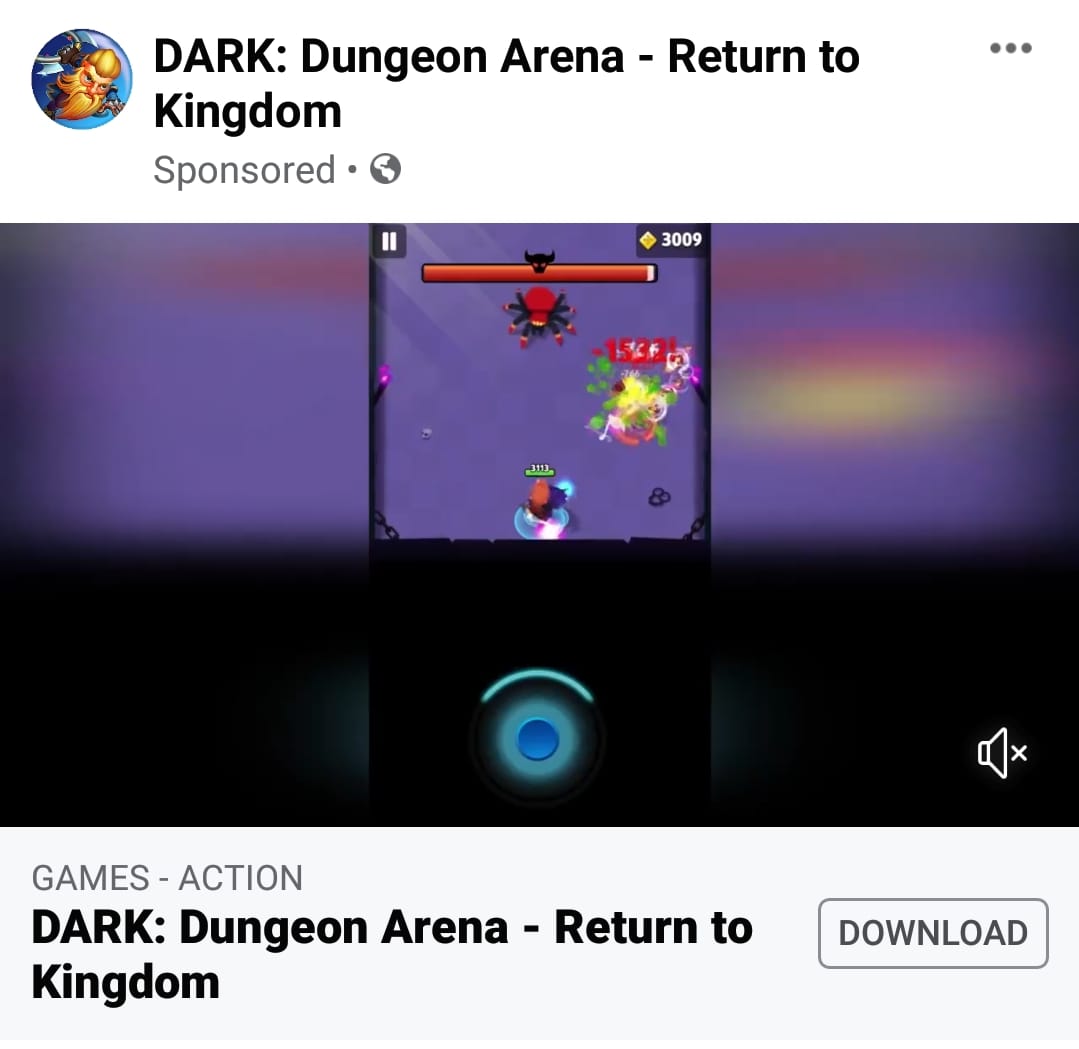If you play a lot of free-to-play games, you will often be exposed to false advertisements. These misleading free-to-play game ads usually take different forms. There are even some ads that include sexual innuendos that might not even exist in the actual game. Some use modified screenshots of other games. Other fraudulent advertisements use animations that do not represent the gameplay of the original game.
Such advertisements are annoying and demeaning to the targets. But why are there so many deceitful advertisements out there? There are, in fact, several reasons behind the prevalence of misleading game commercials.
Without further ado, let’s explore this topic together.
1. Game developers/publishers who are not confident in their products
Just like the exams you experience in school, you will probably not cheat if you are confident with the exam materials. On the other hand, you will most likely cheat when you have doubts about your abilities during the test.
Take social media as another example. Most people who are confident with their looks will use their own photo as their profile picture, and vice versa.
Likewise, game developers who are not satisfied or confident with their final product might want to represent something that has superior quality. As a result, they are willing to take screenshots of other games, manipulate images or videos, or even create advertisements that differ greatly from the actual gameplay.
You can try to imagine the contrary. Will CD Projekt reuse an ad for the release of The Witcher 3? Please see the trailer (which can also be considered an advertisement) of The Witcher 3 above.
Everything in the trailer is, unsurprisingly, in the game. Let’s look back at the first presupposition at the beginning of this section. If CD Projekt has succeeded in creating a high-quality game and is confident in the results, why should they manipulate the trailer or the advertisement?
2. Game developers/publishers who don’t care about branding
Some publishers or developers don’t really care about their brand image. These game developers usually create free-to-play games with the sole purpose of generating large revenues from the players as fast as possible (by incorporating a pay-to-win system).
This is not too different from fraudulent investment companies whose goal is to take your money then escape without a trace. Though the game companies mentioned previously do not operate like this, most of them do not have long-term targets.

These game companies can also change their brand name if they have generated a bad image in the community. The same can be said for most toxic players in online games. They have no plans to maintain their good name in the community and hide behind anonymity. When they get banned for their toxic behaviour, they can easily create a new account.
If these companies do not have long-term thinking, it is easy to justify their misleading actions to the community, such as using fake advertisements. On the other hand, this trick is close to impossible to execute for old and well-established companies Nintendo, which is 130 years old, or Sony, which was founded in 1946, without causing a severe backlash to their brand’s integrity.
3. A digital advertising system that encourages misleading ads
Unfortunately, the cause of the phenomena of false free-to-play game adverts is also driven by many commonly used digital advertising calculation systems.
Most digital advertising cost models used today are CPM (Cost Per Mile), CPC (Cost Per Click), CPI (Cost Per Install), and CPA (Cost Per Activation).
In the CPM system, the advertiser only needs to pay for every 1000 times the ads are shown. Meanwhile, with CPC, the advertiser only needs to pay every time the ad is clicked. The CPI and CPA indicate that advertising costs will depend on the number of installs of the application (CPI) and the number of times the app is opened (CPA).
From the advertiser’s point of view, the more profitable calculation systems are usually the ones with the highest conversion rates. For example, let’s say that you are selling onions in the weeb market. Then, two advertising services, called A and B, gave you an offer.
Service A said, “I have 10 trillion followers who can see your ad.” On the other hand, service B said, “I don’t have that many followers. However, you only need to pay me every time someone buys 10 grams of onions through my ad.”
From this analogy, the better option to pick is service B because the cost (or ROI ) is much easier to calculate concretely. You know very well how much money is needed to sell every 10 grams of onions, for example.
On the flip side, if you chose service B, you cannot be sure how many of the 10 trillion followers will actually see the advertisement. Even though, for example, only 10 people see your ad, you will need to pay the full amount for 10 trillion followers.
However, there is also a downside when choosing service B because they do not care if customers will become loyal in the future. Their primary goal is, after all, to attract new customers that will buy 10 grams of onions.
Service B can also put up an extensively misleading advertisement such as: “put 10 grams of this onion around the neck in 15 minutes, and you will have a 42% chance of preventing various diseases ranging from diabetes, cancer, heart disease, blood circulation, impotence, and cavities. If you use it for half an hour, you will have a much greater chance of 80%. “
Of course, these kinds of ‘overly attractive’ advertisements will most likely get a lot of attention from non-experienced consumers. But whether the onion product actually heals diseases is not service B’s business. The advertisement service only cares about luring customers to buy 10 grams of onions. If the onions do not actually work, the service B will turn a blind eye since they will receive their commission anyways.
Disclaimer: This story is obviously fictitious and is only used as an analogy to elaborate the discussion.
4. The majority of targeted advertisements are gullible
Of course, apart from the advertiser, agency, or service provider, the ad targets are also the ones that allow these fraudulent free game ads to rise in demand.
“Click here to see a photo of a beautiful artist who has just been caught staying at the hotel with Mr. Horse.” “This 1000-storey house can be yours by simply sending a selfie while holding your ID card.” Maybe these examples are hyperbolical, but people, more often than not, still get fooled by them.

Some people’s logic can be blurred when it comes to libido. That’s why there are game ads that promote sexual innuendos even though they might not exist in the actual gameplay. Other game advertisements use graphic (photo/video) manipulation to “beautify” the game.
You and I can definitely educate the market segment that these misleading ads are targeting. As fewer people get deceived by fake advertising, the likelihood that advertisers with use these cheap tactics will also decrease. I am very well aware that if you manage to read the article up to this point, you should not be included in the gullible market segment. However, there are still many people out there who can be potential victims of false ads. So, help them out by sharing this article!
5. Unclear consumer protection laws
The last reason behind the prevalence of misleading game advertisements, in my opinion, lies in the lack of clarity about the current laws regarding consumer protection. From my googling results, two sources might be of good use. The first source is from an article on HukumOnline, while the second source comes from a study entitled Legal Responsibility of Advertising Business Actors for Advertising Products that Violate Advertising Ethics (PDF).
I am by no means an expert in the law, and I can’t quite grasp whether it is actually legitimate to bring up the issue of false advertisements in court.
Even if it can be questioned, who can be held accountable? We also have to consider the fact that most of these mischievous publishers/developers do not have companies in Indonesia. Can I dispute this through international legal channels? Furthermore, what about the advertising platforms, such as Facebook or Google, that display these fraudulent ads?
Unfortunately, even though there are laws out there concerning fraudulent advertising, it does not make the problem any easier to solve, perhaps because of the weak law enforcement on this matter.
Conclusion
I believe that the prevalence of deceptive game advertisements does not originate from just one aspect. From the 5 aspects that I mentioned above, we only have the power to change and educate the market segment, although it is not easy to do either.
Nevertheless, I hope this article can be helpful for you and the people around you. So, again, don’t forget to share it!
Translated by: Ananto Joyoadikusumo. Feat Image via: Gibbs Law Group
